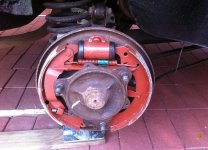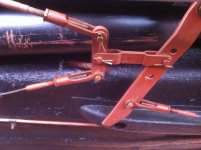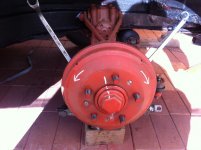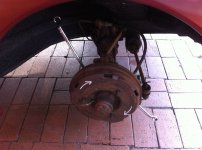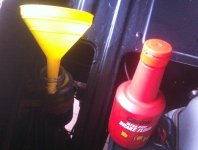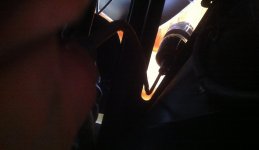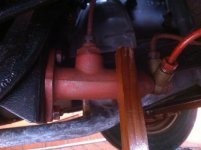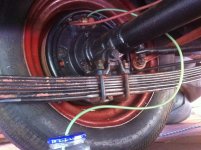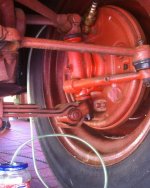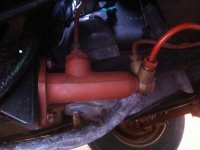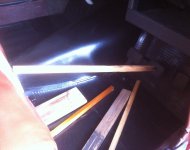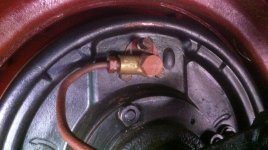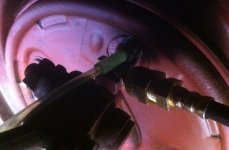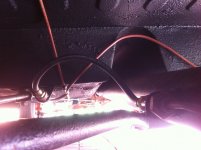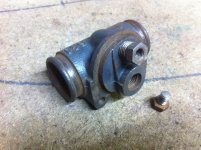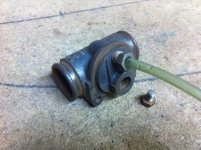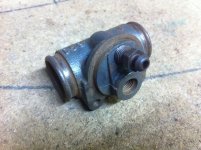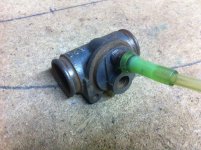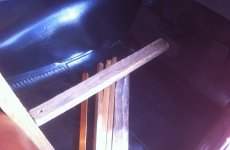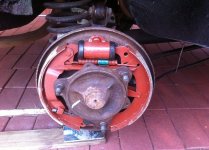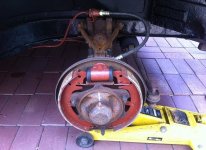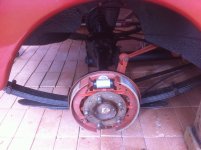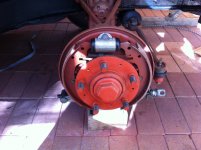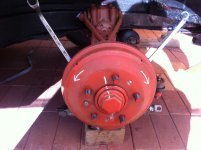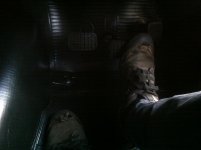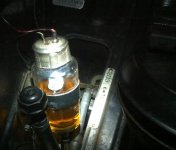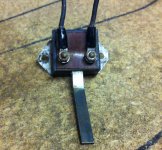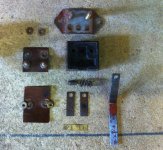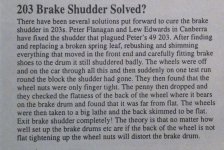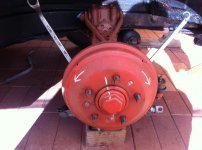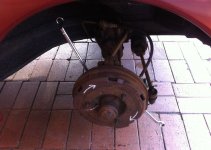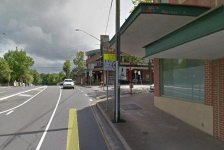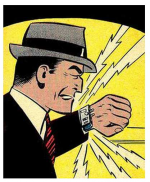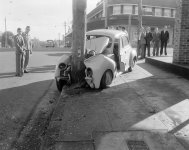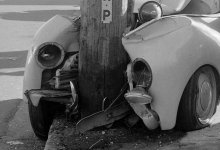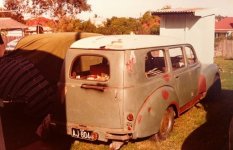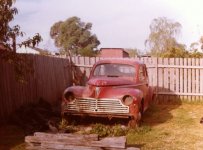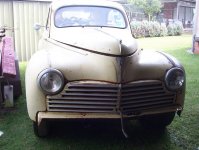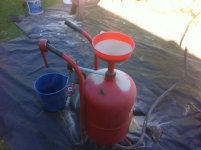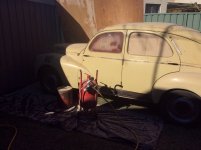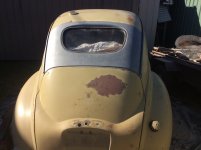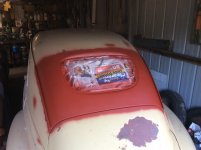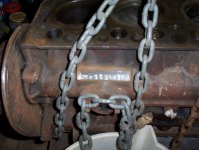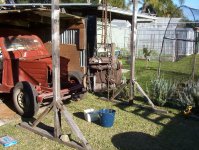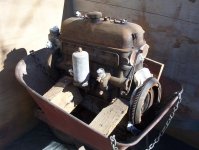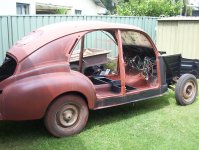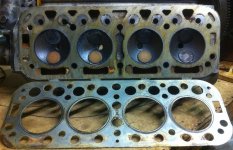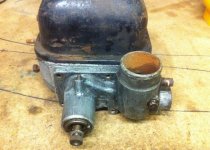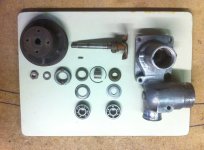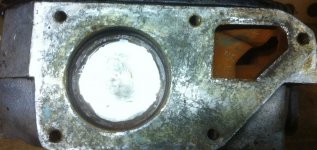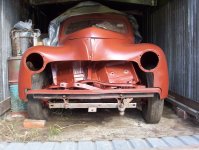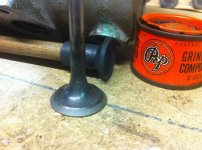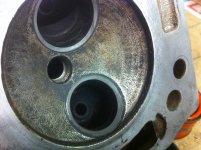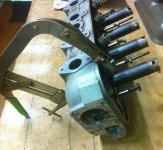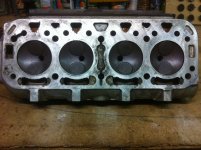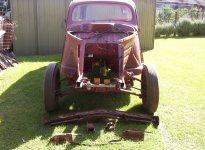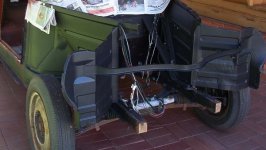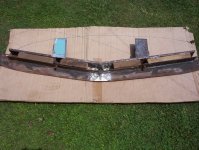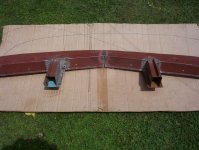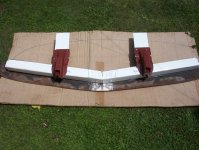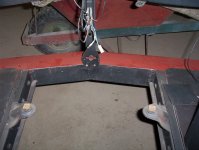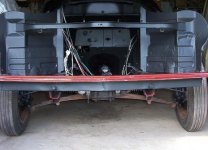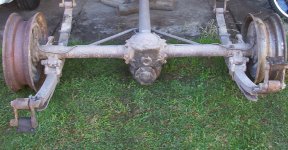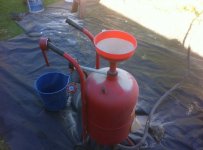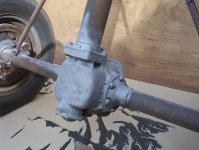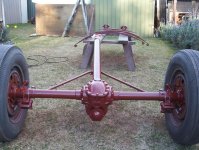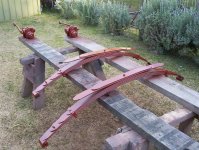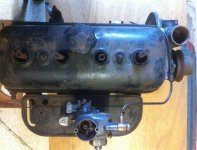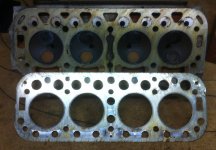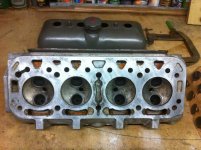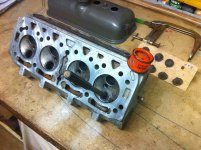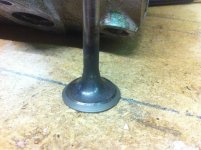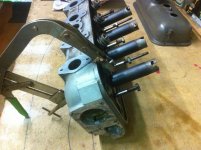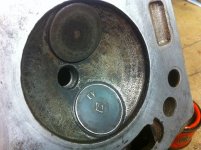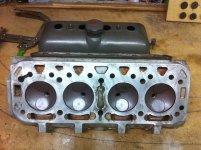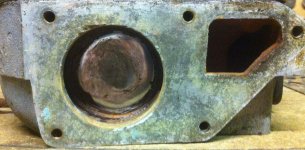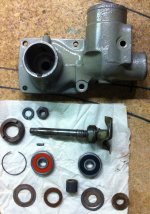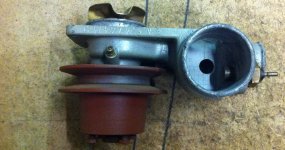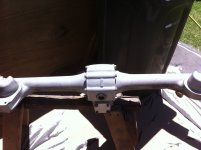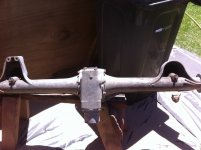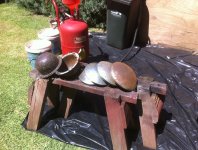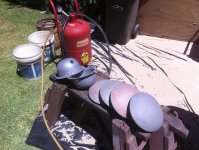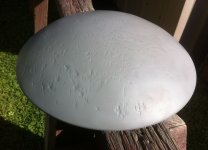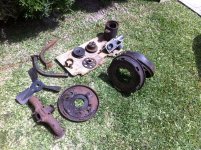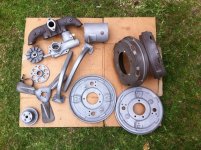Once all the brake shoe adjusters are operating as they should with the help of the squared out wheel nuts there are 2 more items that need to be checked as well, these being the 2 handbrake cables. Over the years they tend to stiffen up in their movement due to all the crud that finds its way in between the cable and outer sheath. The only way to free them up is to pull them off and give them a good soak overnightWith post #13, if the adjuster square is in good shape and with good movement one has a choice of leaving as is, and keeping the squared out wheel nut in the car tool box for when it's needed. As the first image in this post shows, this adjuster is pretty well flogged, so no option here but to weld the wheel nut to the adjuster stump. Have to grind or cut the wheel nut to a depth that meets the end of the stump so you get a good strong weld here, as will be under a bit of stress when being turned. The third image shows how much space one has to do this with the road wheel attached. Fourth image shows the type of repair kit that was once available many moons ago. To be continued,,,,,,,View attachment 218023View attachment 218024View attachment 218025View attachment 218026
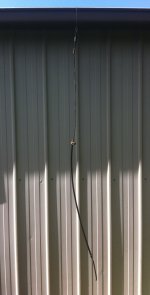
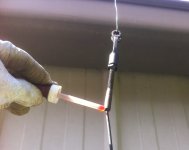
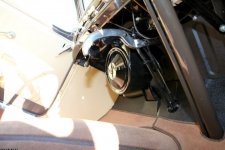
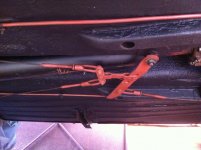
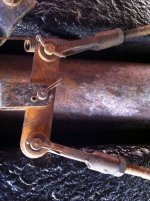
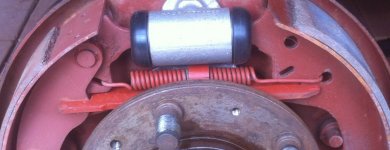 , (diesel does a good job). Next day, out of the bath, grab a few rags and whilst pulling the cable back and forth in its sheath keep wiping until the cable is clean. Next, hang em up, and with an eye dropper, run some clean oil down the length of exposed cable and leave for an hour, this should be enough time for the oil to find its way through the length of the sheath. Wipe the excess off and re assemble to the back plate and equalizer bar. Depending on how far the handbrake handle travels in it's pull-on motion, if it's wanting to go close to the dashboard in its pull up motion before any resistance is felt, adjustment is needed. This is done by pulling the pins from the 'equalizer bar' on both cables to clear the connecting cable yokes so they can be turned in a clockwise motion to tighten up the cables. This can be very 'fiddley' to get both rear wheels 'tight as' when the handbrake lever is activated. 1 cable yoke might need a few more turns than the other to achieve the desired result due to possible uneven wear in the 2 handbrake connecting links between the rear shoes.
, (diesel does a good job). Next day, out of the bath, grab a few rags and whilst pulling the cable back and forth in its sheath keep wiping until the cable is clean. Next, hang em up, and with an eye dropper, run some clean oil down the length of exposed cable and leave for an hour, this should be enough time for the oil to find its way through the length of the sheath. Wipe the excess off and re assemble to the back plate and equalizer bar. Depending on how far the handbrake handle travels in it's pull-on motion, if it's wanting to go close to the dashboard in its pull up motion before any resistance is felt, adjustment is needed. This is done by pulling the pins from the 'equalizer bar' on both cables to clear the connecting cable yokes so they can be turned in a clockwise motion to tighten up the cables. This can be very 'fiddley' to get both rear wheels 'tight as' when the handbrake lever is activated. 1 cable yoke might need a few more turns than the other to achieve the desired result due to possible uneven wear in the 2 handbrake connecting links between the rear shoes.
